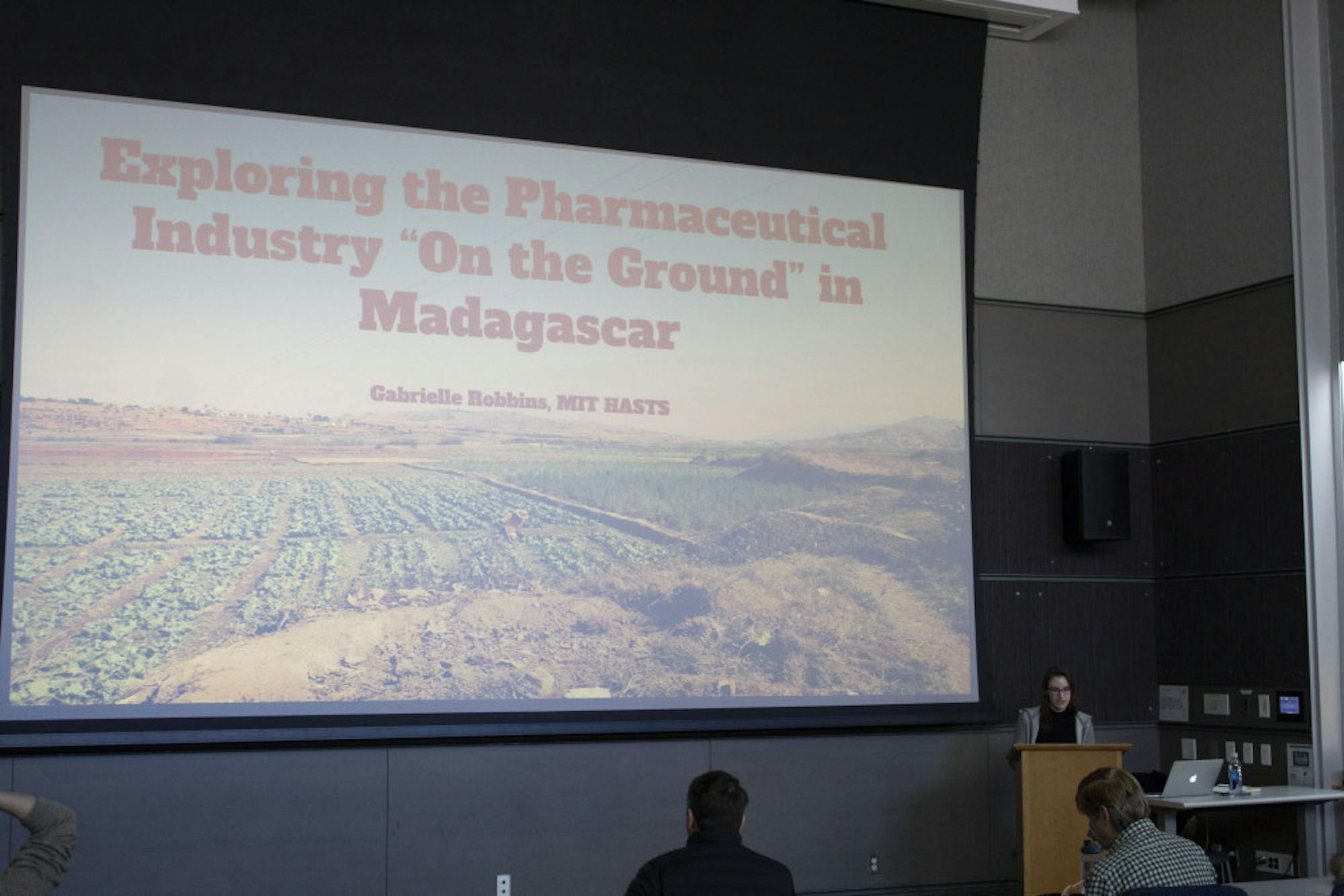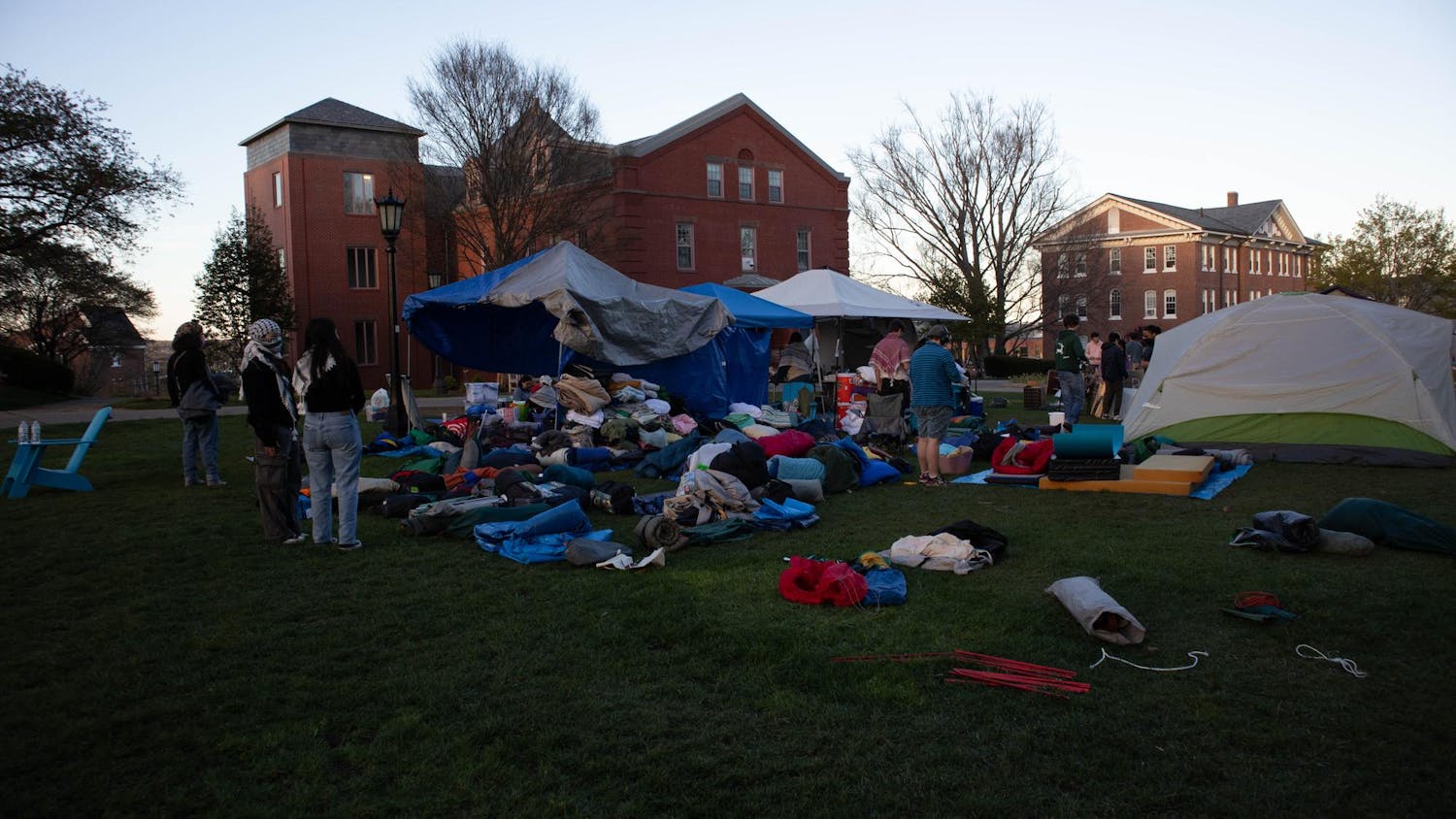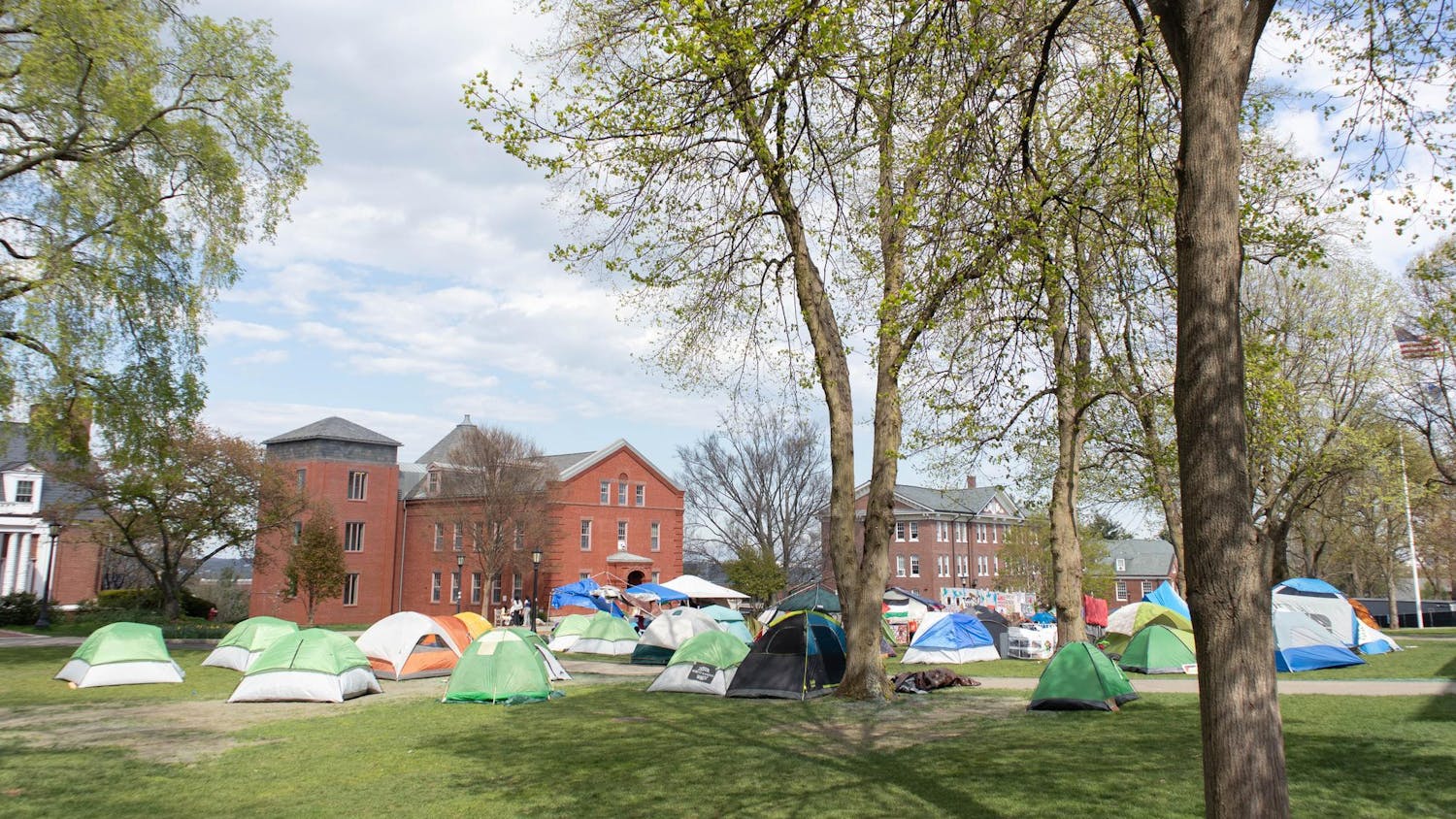Gabrielle Robbins, a Ph.D. candidate at theMassachusetts Institute of Technology (MIT), spoke on Friday about how local farmers in Madagascar navigate their relationships with pharmaceutical and biotechnological companies in a globalized setting.
Robbins visited Tufts for the Science, Technology, and Society (STS) lunch seminar, co-hosted by the Jonathan M. Tisch College of Civic Life and the Department of Biomedical Engineering, for her talk in the Sophia Gordon Multipurpose room titled "Exploring the Pharmaceutical Industry 'On the Ground' in Madagascar."
Robbins, a student from the MIT Department of History, Anthropology, and Science, Technology, and Society, explained that what prompted her to research the relationship between the pharmaceutical industry and local communities was her curiosity about what it takes to make a drug.
“In my work specifically, I focus on pharmaceutical manufacturing,” Robbins said. “What kind of work does it take to make those medicines we often take for granted? Where does that work happen? It turns out that making pharmaceuticals is really complicated. It takes all sorts of ingredients, and they often come from a variety of places.”
Inspired by her undergraduate mentor, Robbins first traveled to Madagascar in 2014, where she began fieldwork on the artemisia plantations in the city of Fianarantsoa. This plant is of particular interest to her due to its effectiveness in battling malaria, which is on the rise because of global warming, according to Robbins.
“Large pharmaceutical companies … now invest millions in what is called [artemisinin-based combination therapies], or ACTs, which [are] a [World Health Organization]-recommended treatment for malaria,” Robbins explains. “As global malaria severity increases due to climate change, a stable supply of ACTs is critical.”
Robbins then transitioned from her research into questions of power dynamics between a developing country’s rural communities and the global pharmaceutical industry, as well as questions of exponential growth of technological innovations. She went on to explain how a French company, located in Fianarantsoa and supported by the local government, infiltrated farmers’ production.
“In 2015, a French-owned company took over a government-built industrial plant that sits along the river throughout [Fianarantsoa] and they began to expand artemisia cultivation around the city," Robbins said. "The idea was to be able to support rural farmers and urban industrialization at once by establishing what’s called a value-added pharmaceutical supply chain."
Since crop-theft remains prevalent in the region, Robbins noted that companies like the one in her example could ensure the price of the crops to local farmers, so long as they grew the crops the companies wanted. This practice leads to the widespread cultivation of artemisia in Fianarantsoa, even though the land can be used to grow other valuable crops in need, according to Robbins.
Farmers in Madagascar also face competition from the biotechnology industry, which tries to use synthetic biology to engineer products to counter the global rise of malaria, according to Robbins.
“Concerns about the anti-malarial shortage in the 1990s [propelled this giant multimillion-dollar research project,” Robbins said. “Artemisia supply was going up and down constantly, and this group was trying to find new laboratory production methods to stabilize this industry … You sort of have a fight playing out between chemical and plant-based [ingredients]."
Robbins added that the current biotechnology industry hasn’t yet achieved any technological breakthrough that will threaten small-holder cultivation. She highlighted the conflict that continues between the ideals of sustainability and the protection of low-tech drug industries.
After observing that the industry’s current emphasis on biodiversity protection works against the interests of local communities, Robbins proposed a new model which would integrate conservation of both the environment and the livelihoods and practices of local farmers.
“[Madagascar] is itself a biodiversity hotspot with high-grades of species animism … because of this, conservation areas have increased since the 1980s. You have national parks and protected areas that are now proliferating,” Robbins said. “But these conservation projects were criticized by anthropologists for their prioritization of animal and plant life and diversity over human survival."
At the conclusion of her lecture, Robbins invited the audience to ask questions.
In response to a question about the exploitation of local communities by pharmaceutical companies, Robbins suggested holding a more nuanced outlook on the relationships between the two entities.
“Right now I’m not convinced that the power imbalance is that stark," Robbins said. "I’ve heard a lot from farmers this summer about all the things they were doing to force pharmaceutical companies to help them out, and they refused to accept the [pharmaceutical] companies’ status quo.”
Robbins elaborated on the ways in which farmers have organized to collaborate against the influential industries.
“I’m actually very interested in how things like village co-ops, agricultural collectives or other forms of regional social organizations helped these farmers in navigating what is otherwise a global and complex industry," Robbins said.
Robbins explained that her next research project will triangulate the relationship between farms, factories and scientists to investigate how the knowledge-production process plays out spatially and socially.
MIT researcher discusses Madagascar pharmaceutical industry

Gabrielle Robbins talks on "Exploring the Pharmaceutical Industry 'On the Ground' in Madagascar" in Sophia Gordon Hall on Feb. 14.





